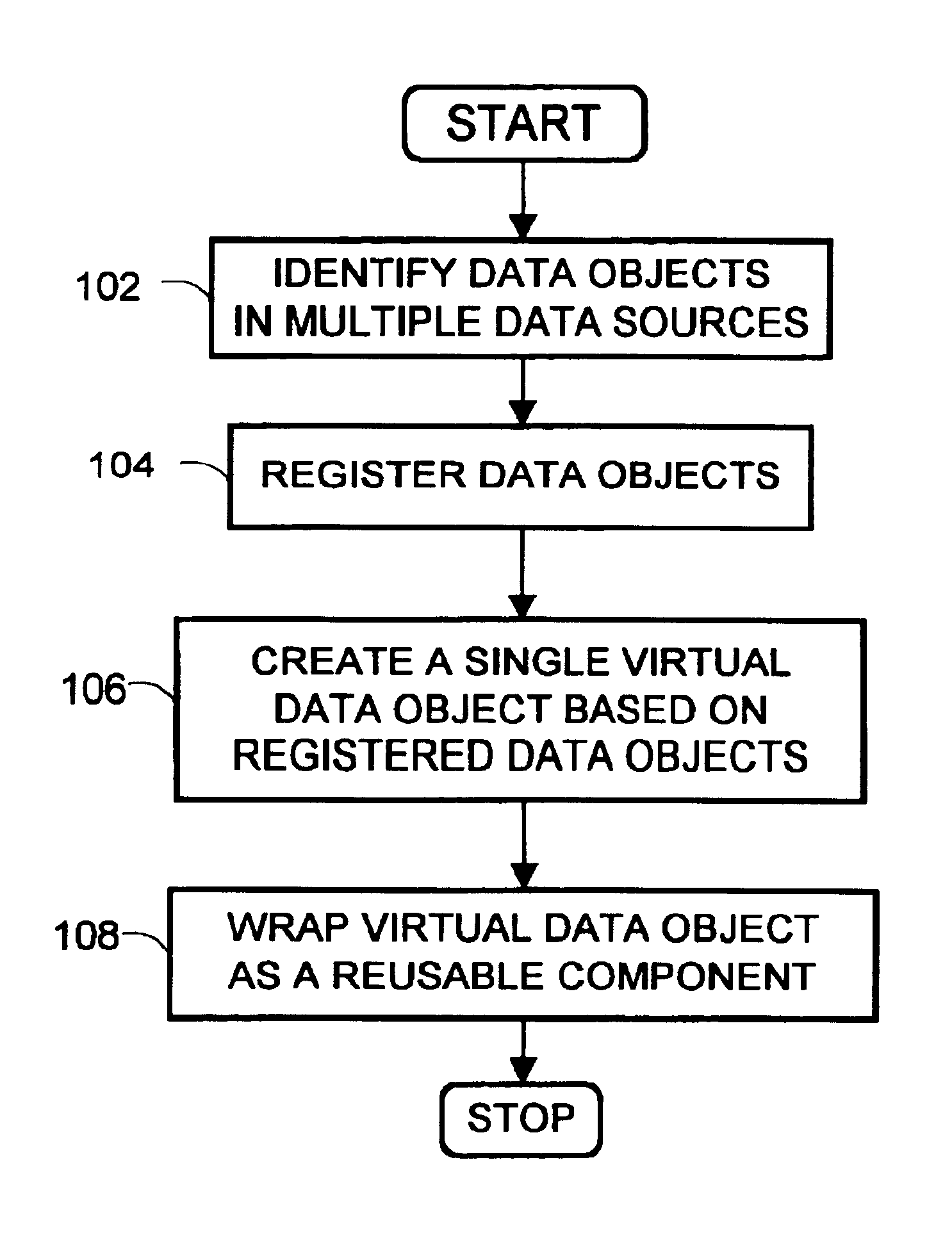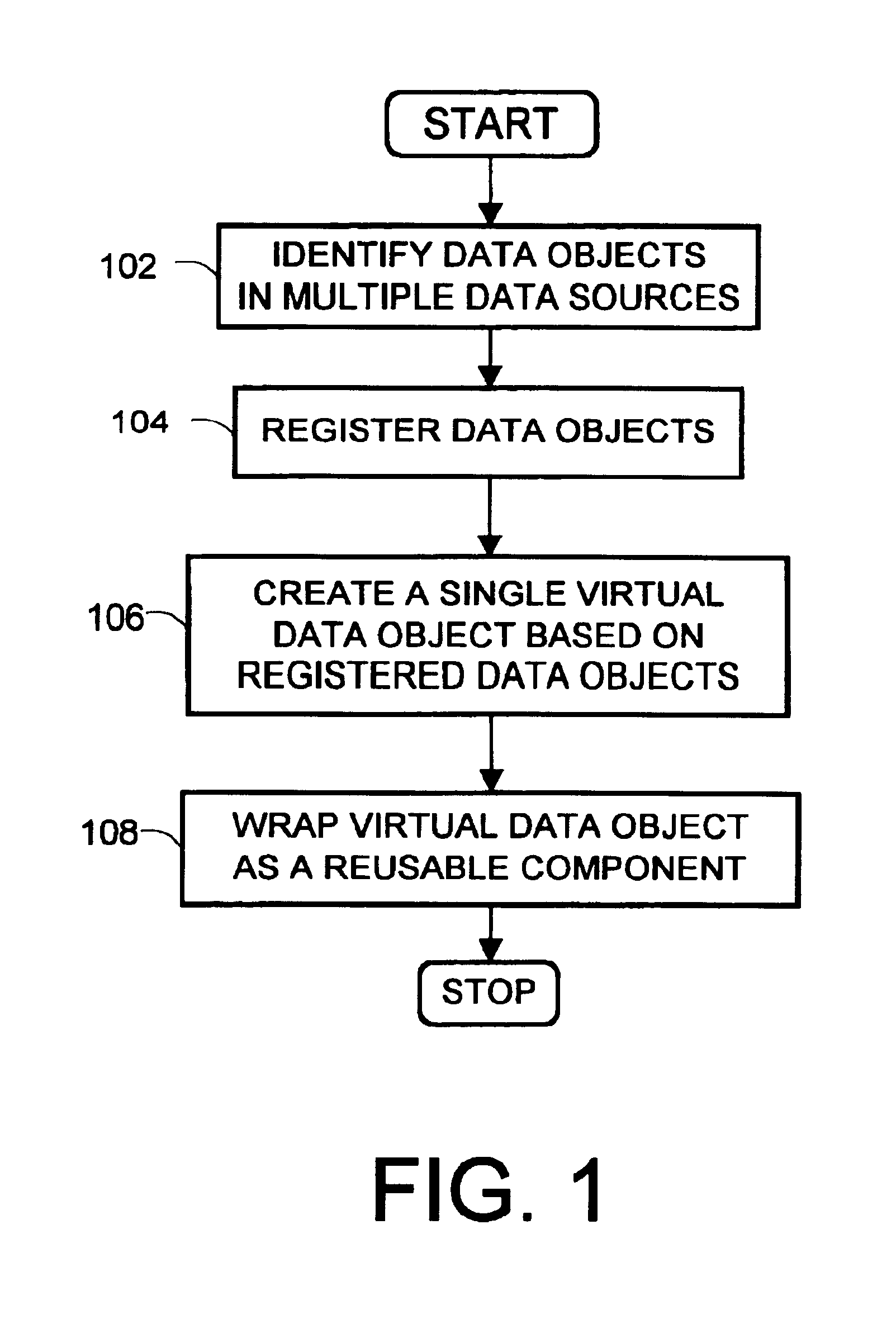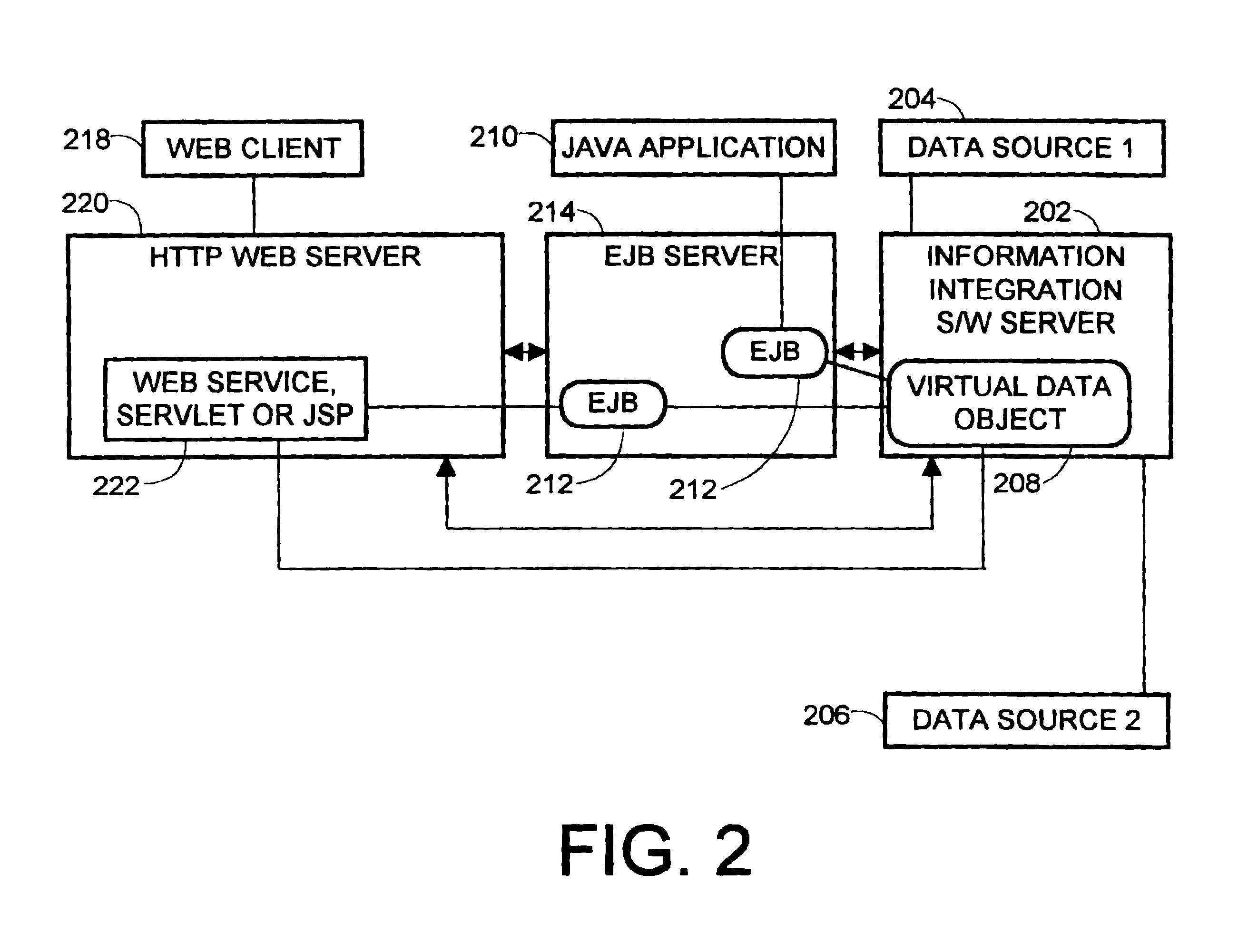Mapping data from multiple data sources into a single software component
a data and software technology, applied in the field of database management systems, can solve the problems of increasing labor requirements for bean development and testing, affecting the portability of the bean itself, and web application developers often finding they have little or no control over which dbms product they choos
- Summary
- Abstract
- Description
- Claims
- Application Information
AI Technical Summary
Problems solved by technology
Method used
Image
Examples
Embodiment Construction
[0025]In the following description of the preferred embodiments reference is made to the accompanying drawings which form the part thereof, and in which are shown by way of illustration of specific embodiments in which the invention may be practiced. It is to be understood that other embodiments may be utilized and structural and functional changes may be made without departing from the scope of the present invention.
[0026]The present invention is directed to a method and system for mapping disparate data from multiple data sources into a single, reusable software component accessible to application developers. Then, application developers, such as Java developers, and third-party software packages can reference this single reusable software component in lieu of directly referencing multiple different data sources, possibly stored in different formats. Moreover, existing conventional technology in an information integration server can automatically handle access to these back-end da...
PUM
 Login to View More
Login to View More Abstract
Description
Claims
Application Information
 Login to View More
Login to View More - R&D
- Intellectual Property
- Life Sciences
- Materials
- Tech Scout
- Unparalleled Data Quality
- Higher Quality Content
- 60% Fewer Hallucinations
Browse by: Latest US Patents, China's latest patents, Technical Efficacy Thesaurus, Application Domain, Technology Topic, Popular Technical Reports.
© 2025 PatSnap. All rights reserved.Legal|Privacy policy|Modern Slavery Act Transparency Statement|Sitemap|About US| Contact US: help@patsnap.com



